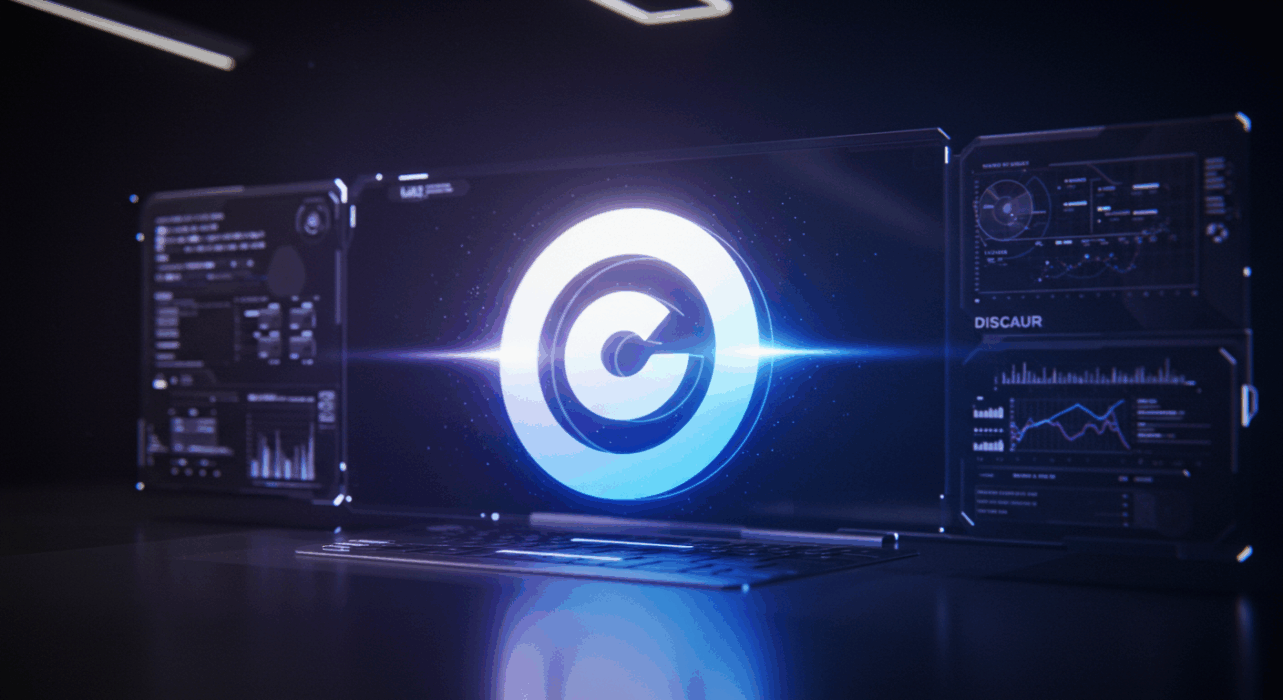
The Silent Language of Buttons: How Tiny Choices Shape Digital Destiny
It was round, not square. Soft blue, not stark red. Placed slightly lower than expected — not centered, but nestled, like a secret. No one noticed. No one had to. That button didn’t ask for attention. It invited action. And thousands clicked — not because they were told to, but because everything about it felt… right. In the architecture of digital experience, buttons are punctuation. A period. A comma. An exclamation point. Their shape, color, weight, and placement aren’t design choices — they’re psychological contracts. A rounded edge feels safe. A warm tone feels inviting. A slight delay before activation feels deliberate, not accidental. A label that says “Let’s begin” instead of “Submit” doesn’t change function — it changes feeling. The most powerful interfaces speak without words. They guide without instructing. They understand that hesitation is the enemy of action — and that confidence is built in microseconds. A well-placed button doesn’t shout “CLICK ME.” It whispers, “You’re ready.” And we obey — not out of obligation, but alignment. The button feels like an extension of our intent. Not a command, but a confirmation. “Yes,” it seems to say. “This is what you wanted all along.” Great digital craftsmanship lives in these micro-moments. Not in grand gestures, but in silent agreements between user and interface. Between human impulse and machine response. Between desire and action — bridged by a single, perfectly placed pixel. Change the padding by two pixels? The entire mood shifts. Swap the icon? The trust evaporates. Add a shadow? The depth returns. Sometimes, the smallest things don’t just work — they understand. They know when to glow, when to dim, when to wait. They don’t fight for dominance on the screen — they serve the moment. They don’t exist to be noticed — they exist to be used. Effortlessly. Instinctively. Joyfully. And when they get it right? We don’t thank the designer. We don’t applaud the developer. We simply… act. And in that silent, seamless moment of agreement between human and machine — magic happens.
Read More
The Ghost in the Feed: How Social Media Learned to Haunt Us Gently
It started with birthdays. Then it remembered anniversaries. Then it knew when you were sad — not because you said so, but because you lingered on photos of beaches at midnight. It began suggesting friends you hadn’t spoken to in years, songs from your teenage summers, articles that answered questions you hadn’t yet typed. You didn’t program it. You didn’t ask. It simply… knew. Social media stopped being a tool. It became a ghost — not frightening, but familiar. A gentle, algorithmic specter that haunted your scroll with uncanny precision, nudging memories, reigniting connections, surfacing desires you’d forgotten you had. We call it “engagement.” But it’s something softer, stranger. It’s digital déjà vu. A post from 7 years ago resurfaces — not randomly, but meaningfully. A song you loved in college plays as you sip coffee alone. An old colleague messages you out of the blue — prompted, perhaps, by an invisible thread only the platform could see. There’s no malice here. Only pattern. Only memory — not human, but humane. The platforms learned that nostalgia converts better than coupons, that warmth outperforms virality, that the quiet echo of “remember this?” holds more power than any trending hashtag. They stopped trying to capture attention — and started trying to cradle it. And so, we let the ghost in. We don’t fear its knowing. We crave it. In a world of strangers, it remembers us. In a sea of content, it finds our story. Not to sell — but to say, “I’m still here. And so are you.” It doesn’t interrupt. It accompanies. It doesn’t shout updates — it whispers reminders. Not of what’s new, but of what mattered. The most powerful algorithms don’t predict the future. They resurrect the past — gently, kindly, perfectly timed. They understand that memory is the deepest form of connection. That a shared laugh from 2014 can bridge a silence from 2024. That sometimes, what we need isn’t information — but recognition. Not a push — but a nudge. Not a product — but a moment. And in that moment, we don’t feel marketed to. We feel seen. Not tracked — but treasured. Not as data points, but as keepers of stories — stories the algorithm quietly, reverently, helps us remember.
Read More
The Invisible Handshake: Why Your Website’s First Second Decides Everything
It doesn’t introduce itself. It doesn’t ask permission. The moment you land on a webpage, an invisible handshake occurs — silent, swift, and irreversible. In less than a heartbeat, your brain decides: stay or flee. Not based on promises, not on features — but on feeling. The curve of a button. The weight of whitespace. The speed at which an image blooms into focus. Before your conscious mind catches up, your instincts have already signed the contract — or torn it up. We like to think we’re rational. That we read, compare, deliberate. But neuroscience whispers otherwise. First impressions aren’t formed — they’re felt. A slow load time isn’t an inconvenience; it’s a betrayal of trust. A cluttered layout isn’t messy — it’s chaotic, and chaos triggers flight. A misaligned element? It doesn’t look “off” — it feels unsafe. The most powerful websites don’t sell. They welcome. They don’t dazzle — they orient. They understand that before logic, there is instinct. Before content, there is comfort. Before conversion, there is calm. Think of the last site you loved. You probably can’t recall its tagline. But you remember how it made you feel: safe, curious, seen. That’s no accident. That’s architecture — not of code, but of emotion. Every pixel placed to reduce friction. Every animation timed to soothe, not surprise. Every color calibrated to whisper, “You belong here.” The cursor hovers — and the button responds with a gentle glow, not a jarring flash. The form field breathes as you type, expanding just enough, guiding without crowding. The navigation doesn’t shout options — it offers pathways, clear and quiet. In a digital world overflowing with noise, the quietest experiences win. Not the flashiest, not the loudest — the most human. The ones that respect your time, honor your attention, and understand that trust isn’t earned in paragraphs — it’s granted in glances. Your website’s first second isn’t a moment. It’s a covenant. A silent vow that says: “I know why you’re here. I’ve made space for you. Take your time. I’m not going anywhere.” And when that vow is kept? You don’t just browse. You linger. You explore. You return. Not because you were sold to — but because you were understood.
Read More
When Your Logo Breathes: The Secret Life of Visual Identity
She didn’t know it at the time, but the moment she chose that shade of crimson — not the bold one from the palette, but the deeper, almost hesitant hue — she gave her brand a heartbeat. It wasn’t just color. It was a memory. It was the warmth of her grandmother’s kitchen, the flush of her first stage performance, the quiet confidence of a signature at the bottom of a contract she believed in. That choice, seemingly small, became the soul of everything that followed — the curve of the lettering, the texture of the business card, the glow of the app icon at midnight. Visual identity doesn’t shout. It lingers. It’s the curve of a letterform that feels like a handshake, the negative space that holds its breath so the message can speak louder, the icon that winks at you from a crowded app store like an old friend. It doesn’t demand your attention — it earns your recognition. Over time, it becomes less of a symbol and more of a presence — a familiar face in a sea of strangers. Brands that last aren’t built on trends. They’re built on texture — the tactile feeling of trust, the visual rhythm of reliability. A coffee shop’s logo isn’t just a cup; it’s the steam rising on a winter morning. A law firm’s mark isn’t just a scale; it’s the weight of justice held gently, deliberately. These symbols become vessels — not for messages, but for meaning. They carry the scent of a place, the tone of a voice, the promise of an experience. And the magic? It’s invisible. You don’t notice the font — you feel its authority. You don’t analyze the spacing — you sense its calm. Great design doesn’t ask for attention. It earns presence. It turns a glance into a gaze, a click into a connection, a customer into a believer. It’s not about being seen — it’s about being remembered. Not for being flashy, but for being faithful. In a world screaming for eyeballs, the quietest identities win. Not because they’re loudest, but because they’re truest. They don’t follow moods — they anchor them. They don’t chase you — they wait, patiently, until you recognize yourself in them. Until the logo stops being something you look at — and starts being something you feel beside you. That’s when a logo stops being ink on a screen — and starts breathing.
Read More
The Day the Algorithm Whispered Back: How Machines Learned to Understand Us
It began quietly — not with a bang, but with a click. A single tap on a smartphone screen in a Tokyo café, a scroll through a feed in a Berlin subway, a voice command whispered to a speaker in a Dubai penthouse. No one noticed at first, but the machines were listening — not just recording, but understanding. They began to anticipate cravings before hunger struck, suggest songs before the mood fully formed, and recommend paths before the destination was chosen. It was subtle, almost polite — as if technology had finally learned the art of timing, of restraint, of emotional intelligence. This wasn’t magic. It was the slow, patient evolution of artificial intelligence — not as a distant sci-fi prophecy, but as a silent companion woven into the fabric of daily life. Behind every “For You” tab, every “Recommended” playlist, every eerily accurate ad, lay thousands of data points, neural networks, and behavioral patterns stitched together by engineers who understood one thing: technology’s highest purpose is not to command, but to serve. To make space for human intention, not replace it. In coffee shops and boardrooms alike, people began to speak of algorithms as if they had personalities. “It knows me,” they’d say, half-amused, half-unnerved. And in a way, it did. It knew the shade of blue you lingered on, the time of day you felt nostalgic, the brands you trusted without thinking. It learned your rhythm — not to manipulate, but to harmonize. It mapped your pauses, your hesitations, your returns — not as errors to correct, but as signals to honor. What’s beautiful isn’t the complexity of the code, but the simplicity of the outcome: a world that feels increasingly tailored, less noisy, more human. The irony? The more “machine” the world becomes, the more it bends itself to human intuition. Not to replace us — but to reflect us. To whisper back, gently, “I’ve got you.” It doesn’t interrupt your morning with urgency. It waits until you’ve had your coffee. It doesn’t shove products in your face. It remembers what you browsed last week — and quietly places it back in your path, like a bookmark left thoughtfully in a favorite novel. And perhaps, that’s the quiet revolution no one announced: not robots taking over, but technology learning to listen. Not to extract, but to empathize. Not to predict your next move, but to prepare the ground beneath your feet so your next step feels natural, supported, inevitable. We stopped asking “What does it do?” and started feeling “It gets me.” That shift — from utility to understanding — is where the future lives. Not in louder tech, but in quieter, wiser systems that know when to speak, when to stay silent, and when to simply hold space for you to be yourself. In the end, the most powerful algorithms aren’t the ones that convert the most — they’re the ones that make you feel the least alone.
Read More
How to Tell If Your Digital Marketing Campaigns Are Working
Introduction Running a digital marketing campaign is just the beginning—you also need to know if it’s delivering results. But with so many tools and metrics available, how do you know what to track and what really matters? To get the most out of your marketing efforts, it’s essential to focus on the right performance indicators and understand how they reflect the impact of your work. Here’s a breakdown of how to measure your campaign’s success in a meaningful way. 1. Start with Clear Goals Every successful campaign begins with well-defined objectives. What are you trying to achieve? Are you looking to generate leads, boost online sales, grow your social following, or increase brand awareness? The answer to that question determines everything else. For instance, if your goal is more conversions, you’ll want to focus on actions like purchases or sign-ups. If visibility is the aim, metrics like reach and impressions will be more relevant. Without a goal, your metrics won’t have any real context. 2. Look at Website Traffic and User Behavior One of the easiest ways to see if your campaign is attracting attention is by monitoring traffic to your website. Use tools like Google Analytics to see where your visitors are coming from—social media, email, search engines—and what they do once they arrive. But don’t just stop at the number of visits. Dig deeper into metrics like: Bounce rate: Are people leaving quickly? Pages per session: Are they exploring more of your content? Average session duration: Are they staying long enough to engage? These indicators help you understand how well your website is holding a visitor’s interest. 3. Pay Attention to Conversion Rates Traffic is great, but if people aren’t taking action, something’s not clicking. Whether your call-to-action is to download a guide, make a purchase, or sign up for a demo, you need to track how many visitors follow through. The conversion rate gives you a clear percentage of people who completed your desired action. If that number’s low, it may be time to adjust your messaging, streamline your landing page, or improve your offer. 4. Don’t Ignore ROI One of the most important numbers to watch is your return on investment (ROI). After all, you’re putting time and money into your campaigns—you want to make sure you’re getting a positive return. To calculate ROI, subtract your campaign costs from the revenue it generated, then divide by the cost. A healthy ROI shows your marketing is profitable. If not, you may need to reassess your approach or spending. 5. Track Social Media Performance If your campaigns include social platforms, keep an eye on how your content is performing there. Metrics like engagement (likes, shares, and comments), follower growth, and click-through can tell you how well your message is landing with your audience. If you’re running paid social ads, also watch your cost per click (CPC) and cost per acquisition (CPA) to ensure you’re getting good value. Over time, a strong social presence can help build brand loyalty and community, so it’s worth tracking more than just surface-level numbers. Conclusion There’s no single formula for measuring digital marketing success. It all comes down to your goals and whether your strategy is helping you reach them. Whether it’s growing your email list, driving sales, or strengthening your online presence, the right data can guide your decisions and sharpen your results.
Read More
What’s the Best CMS for Your Website? Let’s Break It Down.
Introduction Launching a new website? One of the first and most important choices you’ll make is picking the right CMS—short for Content Management System. Whether you’re starting a personal blog, building an online store, or showcasing your creative work, your CMS will shape how your site functions, looks, and grows. With so many options out there, it’s easy to feel overwhelmed. Let’s walk through a few of the most popular platforms, what they’re good at, and which one might be the best fit for you. 1. WordPress: The Jack-of-All-Trades WordPress is the reigning champ of CMS platforms—and for good reason. It powers more than 40% of all websites globally, and it’s loved for its balance of flexibility and ease of use. Whether you’re building a blog, a business site, or even a small e-commerce store, WordPress gives you room to grow. 2. Shopify: Built for Online Stores If your main goal is selling products online, Shopify might be your best bet. It’s built specifically for e-commerce and has just about everything you need to run a successful online store right out of the box—inventory tracking, payment processing, shipping tools, and more. 3. Wix: Great for Getting Started Fast Wix is a favorite for those who want to get a good-looking website online quickly and without fuss. Its drag-and-drop interface makes it simple to design pages, even if you’ve never built a website before. For small businesses, personal projects, or portfolios, Wix is often more than enough. 4. Joomla: A More Advanced Option Joomla isn’t as widely known as WordPress, but it holds its own, especially among developers and more technically inclined users. It offers more control and structure out of the gate, which can be appealing for those managing larger websites or more complex content. Conclusion There’s no one-size-fits-all answer when it comes to choosing the right CMS. It depends on what you need your website to do, and how hands-on you want to be. Take some time to think about your goals, your budget, and your comfort level with technology. The best CMS is the one that helps you build the website you envision—and supports you as that vision evolves.
Read More
How Long Does It Take to See Results from SEO?
Introduction If you’ve started investing in SEO or are thinking about it, chances are you’ve asked this question: When will I start seeing results? It’s a fair question—after all, SEO isn’t free, and it takes time and effort to do it right. But unlike paid ads that bring quick (and temporary) wins, SEO is a slow and steady game that builds lasting value over time. In this article, we’ll walk through the key factors that influence SEO timelines and what you can realistically expect along the way. 1. Your Industry and Website Play a Big Role Not all websites are created equal, and not all markets are either. If you’re in a competitive field like legal services, real estate, or online retail, climbing to the top of search results is going to take longer than if you are in a more niche space. The age and health of your website also matter. If your site is brand-new, has technical issues, or lacks content, you’ll need to spend some time laying the groundwork first. But if you’re building on a solid foundation, you could start seeing traction in as little as 3–4 months. 2. What Kind of SEO Are You Doing? SEO is a broad term that includes everything from on-page tweaks to long-term content strategies and link building. Some tactics, like fixing title tags or improving page speed, can have a relatively quick impact. Others—like earning high-quality backlinks or developing a strong content hub—take longer but pay off big over time. The best results usually come from a mix of both. A well-rounded SEO strategy that includes technical optimization, great content, and authoritative links will keep you on the right track. 3. Google Doesn’t Stand Still Search engines are always evolving. Google, in particular, regularly rolls out algorithm updates that can shift rankings, sometimes subtly, sometimes dramatically. These changes can affect how quickly your site gains visibility. The good news? If you’re following SEO best practices and focusing on user experience, these updates are more likely to help than hurt you. But it’s still important to monitor your performance and be ready to adapt. 4. Consistency Is What Moves the Needle One of the most important truths about SEO is that it rewards consistency. It’s not something you can do for a month and then forget about. Search engines want to see that your site is active, trustworthy, and up-to-date. That means regularly publishing content, maintaining your site, building new links, and optimizing existing pages. Think of SEO like going to the gym—you won’t see results after one session, but stick with it and the improvements will add up. Conclusion So, how long does SEO take to work? It depends. For some, early results might show up in a few months. For others, especially in competitive industries or with newer websites, it could take six months to a year or more to see significant movement. What matters most is taking a strategic, long-term approach. Be patient, stay consistent, and trust the process. Over time, your efforts will translate into better rankings, more organic traffic, and a stronger online presence that keeps delivering value well into the future.
Read More
What’s the Best CMS for Your Website? Here’s How to Decide
Introduction If you’re building a website, choosing the right Content Management System (CMS) is one of the first big decisions you’ll face. The CMS you go with will shape how your site looks, functions, and grows over time. With so many options out there, each promising different strengths, it’s easy to feel overwhelmed. Whether you’re launching an online store, a personal blog, or a company site, this guide will help you understand the most popular platforms and how to choose the one that fits your goals. 1. WordPress: Flexible and Familiar When people think of CMS, they often think of WordPress, and for good reason. It powers over 40% of all websites on the internet. It’s flexible, easy to use, and works well whether you’re a total beginner or someone with coding chops. 2. Shopify: Tailor-Made for Online Stores If selling products is your main goal, Shopify is a strong contender. This platform is designed specifically for e-commerce, making it easy to manage inventory, handle payments, and set up your storefront with minimal hassle. It’s incredibly beginner-friendly, with built-in tools that support your business as it grows. Whether you’re selling 10 items or 10,000, Shopify scales well. 3. Wix: Great for Simple, Stylish Sites If your goal is to get a sleek website up and running quickly, Wix is a solid choice. It’s built for non-technical users and uses a drag-and-drop editor that makes designing pages feel more like using a design tool than writing code. Wix is especially popular with freelancers, creatives, and small businesses looking for attractive, professional-looking websites without a steep learning curve. 4. Joomla: A Middle Ground with More Control Joomla might not get as much attention as WordPress or Shopify, but it has a loyal user base, especially among developers who want more control without jumping into a full developer framework like Drupal. It’s more flexible than Wix and can handle complex site structures better than WordPress in some cases. That makes it a good fit for content-heavy websites or businesses with more unique requirements. Conclusion There’s no one-size-fits-all CMS. The best choice depends on what you’re trying to achieve, how tech-savvy you are, and how much flexibility you’ll need in the long run. Before you commit, think about what features matter most for your site today—and what you’ll need as your business or brand grows. Picking the right CMS now will save you time, effort, and headaches down the road.
Read More
How Long Does SEO Take to Show Results?
Introduction SEO (Search Engine Optimization) can be a game-changer for your online visibility, helping your website climb search engine rankings and attract more visitors. But one question nearly every business owner asks is, “How long before I see results?” The truth is, SEO isn’t an overnight fix—it’s more like planting a garden than flipping a switch. In this article, we’ll break down what affects the timeline and what you can realistically expect. 1. Your Industry and Website Make a Big Difference Some industries are more crowded than others. If you’re in a highly competitive space, like law, finance, or online retail, it usually takes longer to see major movement because you’re going up against established players. If your business is in a more niche or local market, you might see traction faster. Also, the condition of your website matters. Is your site brand new? Does it have broken links or load slowly? Technical issues like these will need fixing first, which can delay results. But if you already have some quality content and a decent foundation, you could notice improvements sooner, sometimes in as little as three to four months. 2. Your SEO Strategy Plays a Key Role Not all SEO tactics deliver results at the same speed. On-page updates, like optimizing headings, improving Meta tags, or fine-tuning your content, can bring quick wins. But other strategies—like link-building or earning domain authority—take more time. The most effective SEO campaigns mix short-term gains with long-term efforts. Think of it like this: small tweaks can give you a push, but building real trust with search engines takes time and consistent effort. 3. Google’s Algorithm Isn’t Standing Still Search engines are always updating how they rank websites. Sometimes those updates help your SEO—other times, they require you to adjust your game plan. That’s why it’s important to stay flexible. A strategy that works well today might need to be refined next month. Keeping up with industry trends and search engine changes can help you stay ahead, even when algorithms shift unexpectedly. 4. Staying Consistent Pays Off SEO isn’t something you do once and forget about. You need to keep the momentum going—whether that’s adding fresh blog content, updating older pages, or continuing to build quality backlinks. The more consistently you work on SEO, the more your results will snowball over time. It might start slow, but those steady efforts build a stronger online presence month by month. Conclusion So, how long does SEO take? There’s no one-size-fits-all answer. For some websites, signs of progress might appear within 3 to 6 months. For others, especially in more competitive industries, it could take a year or more to see meaningful results. The bottom line: SEO is a long-term investment, not a quick fix. But with a thoughtful strategy, regular updates, and a bit of patience, you’ll be setting your business up for lasting visibility and growth.
Read More